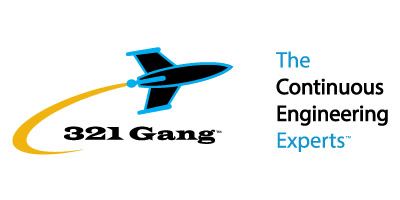7 Ways to Decide if a PMO Organization is Ready for Lean Portfolio Management
Jira Align Tip Sheet

While it might seem like an overwhelming endeavor, implementing lean portfolio management processes is critical to the strategic transformation of your organization. There is no magic “one size fits all” approach, so it’s important to understand where your company is with regard to your current portfolio practices and how to approach the cultural transformation that is required to execute successfully. We encourage you to take the time to understand what is necessary to build a high performing portfolio team and to truly understand what it will take to bring their organization to a high level of excellence. With that in mind, this assessment will help you understand where you are in your lean portfolio management practices, where you might need further development, and some tips to help move you forward.
1. Strategic Alignment
Do you have centralized management of one or more portfolios, which includes identifying, authorizing, managing and controlling projects to achieve specific strategic business objectives that are determined months in advance aligned to corporate vision?
Yes? Excellent! Consider trying to shorten the cycles by shifting from annual with a rolling 5-7 year forecast to every 6 months with a rolling 3-5 year forecast for objectives!
No? Consider establishing a centralized group to review objectives across all groups who perform these functions.
Do you have a holistic prioritization process in place that identifies the value expected delivery?
Yes? Excellent! Consider using a Value Engineering approach, with ‘bets’ against key metrics to determine value, and whether to pivot or preserve.
No? As a first step, look across the organization and consider a “Value Scorecard” with weighted Q&A to help determine which things are most important to complete for your company.
Do you have formalized Change Control processes that include budget, scope & delivery thresholds?
Yes? As a first step, review the controls currently in place. Why were they implemented? Does that reason still exist? Is there an agile ceremony or control that replaces it? If so remove it! If not, keep it, communicate WHY this is important.
No? Excellent! You are well on your way to aligning to an LPM approach.
Implementing LPM will help you: Move away from a Strategic Steering Committee and instead form engaged, action oriented, value driven leadership teams.
2. Financial Governance
Do you use predefined, controlled criteria at annualized gated review points for determining the continuation or halting of a project? Do you spend months preparing proposals for a single, annual opportunity for product development approval?
Yes? Consider reducing to 6 month, semi annual review initially, with a goal of no less than 3 month cycles.
No? Great! You are well on your way to having a LPM approach.
Do you know what the strategic investment themes are, their priority and why they are important to the organization?
Yes? Great! Align the Submitted ideas/epics/projects to each SIT to help prioritize and stay focused on the most important themes.
No? As a first step – Find the person, organization or team that has this information, ask for priorities. Then align your selection criteria to include SIT Alignment.
Implementing LPM will help you: Shift from an annual top-down process to a dynamic approach where planning is ongoing, teams are fixed (in units and cost), and the highest priority work completed first. Establish teams, programs and solution groups based on the products. Recognize that the cost is fixed based on the number of team members executing the work.
3. Task Management
Do you break work down into tasks, estimate in hours, and measure team success on their ability to estimate accurately and to meet the dates created based on these estimates? When something changes, does the entire project require creating a new Work Breakdown Structure based on the projects being funded, then the team spends weeks re-estimating work, which rolls into another set of rigid milestones? Sound familiar?
Yes? Oh boy! Review the reasons why management by tasks is this strong within your organization. Isit because of control stage gates? Is it truly being used for time keeping/resource management or is itthe stick used to beat the “slackers” into submission?
No? Fantastic! Keep making work visible
Implementing LPM will help you: Make all work visible, core to providing transparency and alignment across the entire organization. Segment your backlogs into a portfolio (intake) assessment backlog and a Ready to work backlog. Allowing the portfolio teams to confirm alignment, score, prioritize, validate, fund, forecast, etc. before moving it into the portfolio “Ready to work” backlog.
4. Meetings
Do you have weekly portfolio status meetings with extensive reports and metrics measuring portfolio driven goals that teams are accountable for achieving? Does most of the discussion center around problem areas, so anyone not involved in the issues at hand disengages? Are teams represented by managers?
Yes? Consider this; According to a survey done by PMI – Project Managers spend roughly 4 hours per week PER PROJECT creating status reports; times 4-6 projects under management. That’s a lot of time to be spent generating paper that may not be accurate once it’s presented.
No? Establish a Portfolio sync meeting, which can occur bi-weekly, to gain visibility into how well the portfolio is progressing toward meeting its strategic objectives, including reviewing value stream and program execution and other investments governed by the portfolio.
Implementing LPM will help you: Create a collaboration cadence that reduces time wasted in meetings and focuses on value being delivered.
5. Program Support
Do Project Managers oversee the processes on the projects and act as process enforcers? Are teams expected to always follow the rules and have no input into the way they work?
Yes? Consider allowing the knowledge workers on your team the autonomy to adjust/change processes that permit them to be more in control of their destinies, while adhering to the true controls needed in a collaborative fashion.
No? Super Fantastic! Allow teams to inspect and adapt their own work. Controlling their destiny drives highly predictable delivery!
Implementing LPM will help you: Lean Portfolio Management organizations inspect and adapt regularly. Different techniques are employed to elicit feedback from teams to understand how to work better together and stop doing what’s not working.
6. Resource Management
Do you allocate resources based on skill sets and availability across multiple projects, estimate work in hours and track progress at the task level? Is everyone surprised when teams don’t hit their estimates and schedules have to be reset?
Yes? As a first step, consider forecasting using team weeks for your agile teams. Be sure to reserve capacity for inject, interrupts and changes that may occur during the development activities.
No? Excellent! Planning against velocity in terms of the average velocity of all teams on a train or program group help to simplify forecasting.
Have your people had the appropriate level of agile training for their role in the organization?
Yes? Excellent! You’re doing the right things to change mindsets to a more LPM approach.
No? Consider investing in training. The hardest part of any trans-formative effort is changing mindsets and behaviors that support your end goal.
Implementing LPM will help you: Use broad “directionally accurate” forecasting on a team basis instead of an individual basis. Focusing on demand forecasting by skillset will help to ensure you have the ramp time to train or hire new team members with the technical skills necessary to complete the work at established velocities.
7. Milestone Planning
Do your project managers set rigid milestones with hard criteria based on the results of work breakdown structures and estimates? Is a primary measurement of success the ability to meet these milestones regularly?
Yes? Oh boy! Review the reasons why management by milestone is this strong within your organization. Is it because of control stage-gates? If so, careful review of the controls in alignment with the value they bring to the delivery process will help you to begin building trust in delivery.
No? Super! You are making great steps towards becoming a high performing LPM organization.
Are your planning cadences aligned to fiscal reporting needs?
Yes? Great! Now you’re simplifying and leaning out waste created by manually creating reporting mid development!
No? Review planning cycles and talk with your financial management team to understand financial requirements.
Implementing LPM will help you: Establish a review cadence that allows portfolio management teams to create and test hypotheses, review results, and decide whether to pivot or persevere.
Would you like to learn more? Watch the Webinar (6 part series) HERE.
Questions? Reach out to us at ja@321gang.com!


321 Gang | 14362 North FLW | Suite 1000 | Scottsdale, AZ 85260 | 877.820.0888 info@321gang.com
The Future is Now
We have helped our clients:
- Reduce development costs by 50-60%
- Accelerate time to market by 20-40%



